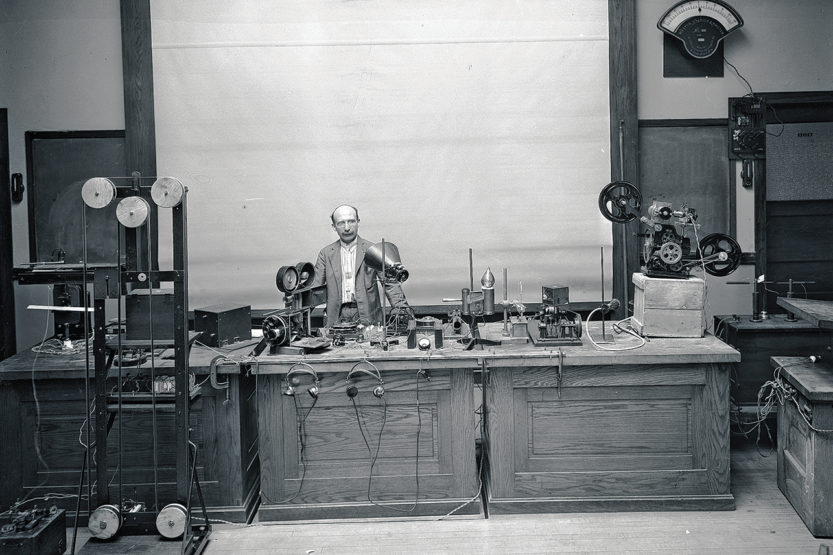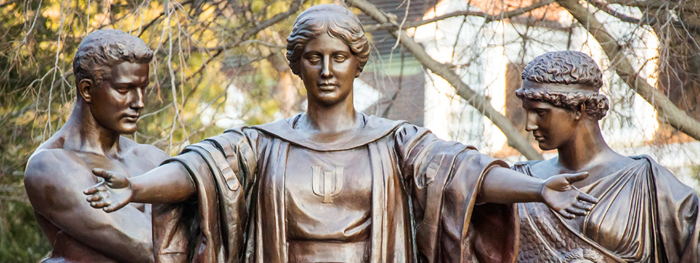Talkie
 UI electrical engineering professor Joseph Tykociner successfully demonstrates sound on film, June 9, 1922. The historic moment ended the era of silent films and opened the door to talking movies. (Courtesy of the University of Illinois Archives #0003326)
UI electrical engineering professor Joseph Tykociner successfully demonstrates sound on film, June 9, 1922. The historic moment ended the era of silent films and opened the door to talking movies. (Courtesy of the University of Illinois Archives #0003326) From the terrifying roar of T-Rex to the memorable melody of Let It Go to Lauren Bacall’s sultry instructions on how to whistle (“You just put your lips together and blow”), moments of sound in film can leave as lasting an impression on a moviegoer as do the visuals—after all, the Academy of Motion Picture Arts and Sciences presents an Oscar for Best Sound Editing.
So as you head out to the theaters this summer, remember that many of your movie memories derive from the invention of sound on film, an accomplishment first achieved by electrical engineering professor Joseph Tykociner, HON 1965, on the University of Illinois campus in 1922.
Tykociner had dreamed of producing sound on film since his boyhood days in Poland, and he was among the first to master the technology. After immigrating to the U.S., he eventually landed at Illinois in 1921 and successfully introduced sound on film—creating what he called a “talkie”—on June 9, 1922.
While talkies quickly replaced silent films, Tykociner didn’t join the A-list of Hollywood. He continued at Illinois for nearly 25 years, conducting pioneering research in several fields, including zetetics and photoelectricity.
(Source: University Archives)
Samson the scriptwriter
In an odd coincidence, the first talking film—The Jazz Singer—was based on The Day of Atonement, a short story written by another person connected to Illinois—alumnus Samson Raphaelson ’17 LAS.
Raphaelson would go on to form a highly successful partnership with film director Ernst Lubitsch, which resulted in several screen classics, including The Little Shop Around the Corner, Trouble in Paradise and The Merry Widow.
(Source: Two ‘Reds’ and a Writer, Illinois Alumni magazine, September/October 2003)

